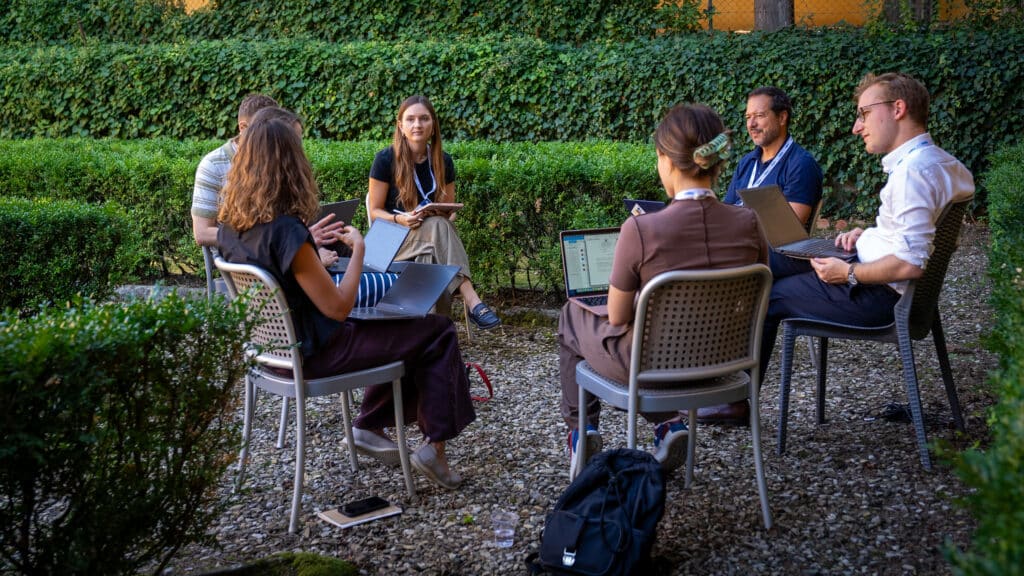
This FSR Debate will discuss which hydrogen infrastructure vision is more likely to prevail in the period to 2030 and, more generally, what this implies for the development of the renewable/low carbon hydrogen sector.
Despite the fact that renewable and low-carbon hydrogen represents one of the pillars of the EU decarbonisation and system integration strategies, there is still significant uncertainty regarding how the sector will develop in the years to come and what this implies for the hydrogen transport infrastructure. In 2020 and again in 2022 the EU set goals for the production and import of renewable hydrogen. However, an agreed ‘target model’ for the nascent hydrogen sector is still to emerge. This might impact the development of the hydrogen transport infrastructure. Reference is often made to a ‘no-regrets’ network. But what would this be?
This FSR Debate will compare two visions – one mostly based on ‘hydrogen valleys’, similar to the current setting of the sector, and another one bases on the development of an EU-wide hydrogen backbone network- and discuss how they could contribute to a ‘no-regrets’ approach to the hydrogen network and what this implies for the development of the renewable/low carbon hydrogen sector.
Introduction to the Debate and Opening Presentations
14.00 – 14.05 Welcome to the Debate
Ilaria Conti | Florence School of Regulation
14.00 – 14.05 Introduction to the Debate
Alberto Pototschnig | Florence School of Regulation
14.05 – 14.20 the EU vision on hydrogen transport infrastructure
Lukas Wernert | Policy Officer, Decarbonisation and Sustainability of Energy Sources, DG Energy, European Commission
14.20 – 14.30 The regulatory perspective for the EU hydrogen transport infrastructure
Csilla Bartok | Head of Department, Gas, Hydrogen & Retail. ACER
Panel Discussion: Introductory Remarks, Polls and Comments
Moderator: Ilaria Conti | Florence School of Regulation
14.30 – 14.50 Introductory remarks from the panellists
María Sicilia | Chairwoman, European Hydrogen Backbone Initiative
Jorgo Chatzimarkakis | CEO, Hydrogen Europe (TBC)
Peter Claes | President, IFIEC Europe
Abel David Enriquez Rodriguez | Moderating Team, ENNOH Foundation Process
Ralph Bahke | CEO, ONTRAS and Board Member, GIE
14.50 – 14.55 Polls
14.55 – 15.20 Comments on the polls outcome and Q&A from the audience
Panellists
15.20 – 15.30 Concluding remarks
Ilaria Conti | Florence School of Regulation
Alberto Pototschnig | Florence School of Regulation
Renewable and low carbon hydrogen is currently considered one of the pillars for the decarbonisation of energy demand. The 2020 EU System Integration Strategy1 included “the use of renewable and low-carbon fuels, including hydrogen, for end-use applications where direct heating or electrification are not feasible, not efficient or have higher costs” as one of the concepts to deliver low-carbon, reliable and resource-efficient energy services, at the least possible cost for society.
In 2022, hydrogen accounted for less than 2% of Europe’s energy consumption and was primarily used to produce chemical products, such as plastics and fertilisers. 96% of this hydrogen was produced from natural gas, resulting in significant amounts of CO2 emissions. Therefore, the 2020 EU Hydrogen Strategy2, unveiled at the same time as the System Integration Strategy, defined a roadmap for the development of renewable and low-carbon hydrogen. The Strategy set the priority for the EU to develop renewable hydrogen, while recognising that in the short and medium term other forms of low-carbon hydrogen are needed.
In terms of short-term ambition, the Hydrogen Strategy set strategic objectives:
Beyond 2030, “renewable hydrogen technologies should reach maturity and be deployed at large scale to reach all hard-to-decarbonise sectors where other alternatives might not be feasible or have higher costs”4.
Two visions for the development of the renewable/low-carbon hydrogen market and the supporting network are possible:
The Hydrogen Strategy seemed to favour the second vision, at least for the 2030 horizon and beyond.
In order to support this vision, a suitable infrastructure is required:
Moreover, the 6th List of Project of Common Interest in 2023 included 65 hydrogen and electrolyser projects. Of these, 17 projects (some of which include several components) related to hydrogen transport infrastructures (although in some cases defined quite generically).
However, so far the hydrogen sector seems to be developing at the local level. All seven projects which were allocated support at the first auction of the European Hydrogen Bank earlier this year envisage the production of renewable hydrogen for local consumption (possibly for the production of ammonia), including in the same industrial complex6.
The regulators are also taking a cautious approach to the hydrogen network in Europe. Both at the 38th European Gas Regulatory Forum in Madrid in April and at the 10th Energy Infrastructure Forum in Copenhagen in June different views were expressed regarding which hydrogen network will be needed and by when. It seems that the sector is looking for a ‘no-regrets’ approach to the hydrogen network, which however risks of pushing the debate into a vicious circle. What such an approach will be depends on how much and where (renewable and low-carbon) hydrogen will be produced and consumed, or imported into the EU. This partially depend on the cost of producing such hydrogen. However, until it is clear which infrastructure will be available, it is unlikely that project beyond those with a local footprint will emerge.
What seems to be missing at the moment is a ‘hydrogen target model’, an agreed vision for the development of the hydrogen sector, in the same way as the ‘electricity target model’ and the ‘gas target model’, although very different in shape, guided the integration of the electricity and gas markets in Europe.
A separate, although related, issue is how any hydrogen network will be paid for. Regulation (EU) 1789/20247 allows, probably for the first time in modern European regulatory history, cross-subsidisation of the hydrogen infrastructure across time and from natural gas network users. The extent to which this cross-subsidisation is needed will depend on the size of the hydrogen network to be developed and the way in which it will be developed.

Join this webinar to explore how lessons from past and forthcoming policy evaluations can enhance the effectiveness, coherence, and impact…

Join this webinar as experts examine, how the European Affordable Housing Plan addresses Europe’s housing crisis as a strategic challenge…

The Florence School of Regulation is pleased to host the 37th edition of the Young Energy Economists and Engineers Seminar…
To meet, discuss and learn in the channel that suits you best.